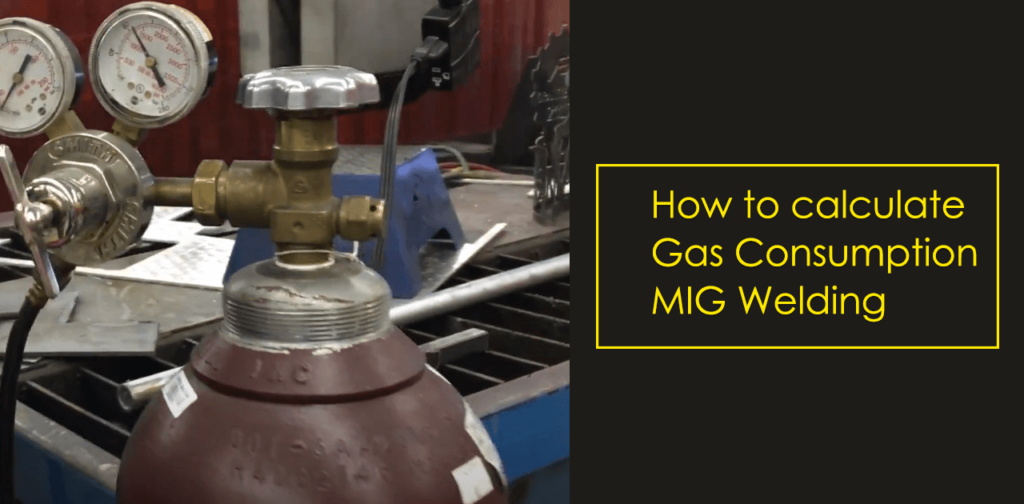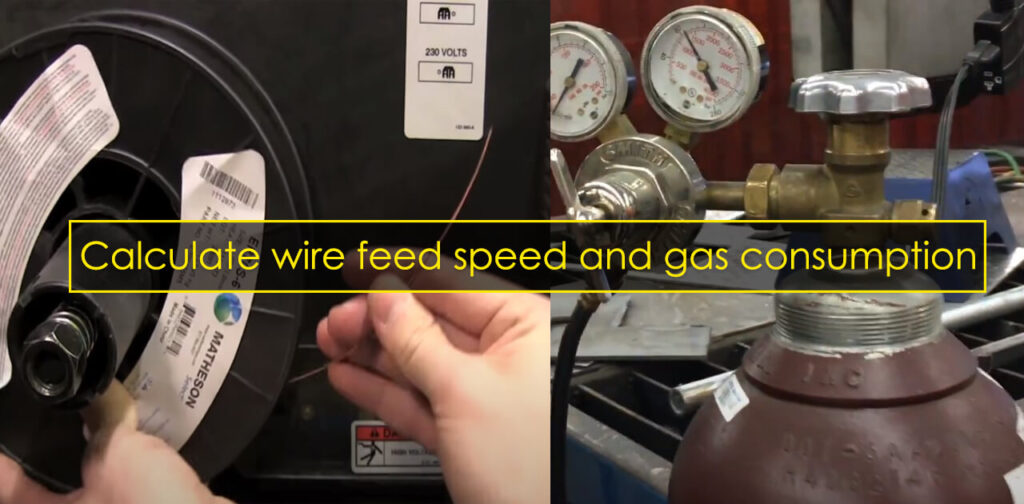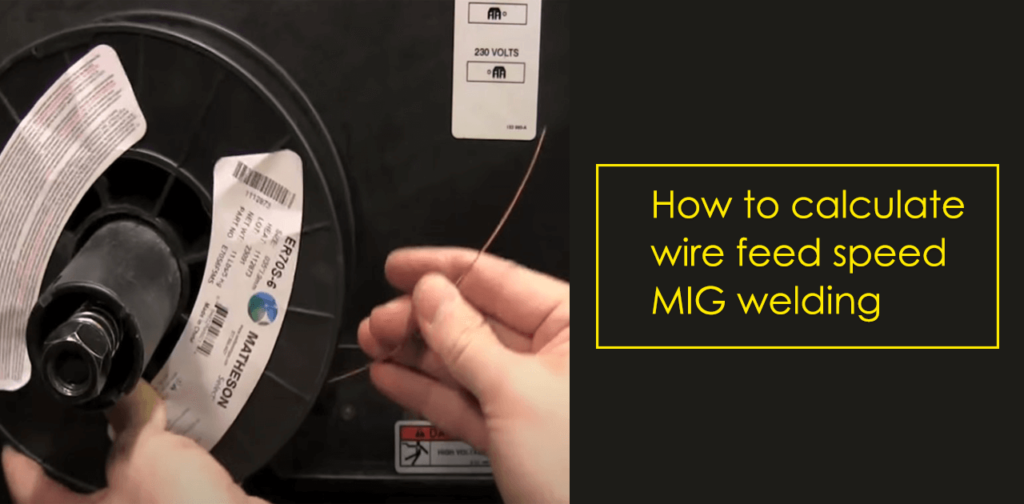The metal inter gas welding is the most common and easiest type of welding; if you ask a beginner or an artist who wants to create some metals, they will refer to MIG welding. If you are a professional welder, you must have heard about MIG welding, but now as there is advancement in technology, we have equipment for easy MIG welding; before the equipment, the MIG welding was not an easy task.
This article will help you to find the answers regarding MIG welding.
- How do we calculate the wire feed speed?
- How do we calculate gas consumption?
Before we head on to find the answers to these very common questions, it is better to revise the knowledge about MIG welding because many readers who are new t the world of welding may not know much about the MIG welding.
What is MIG welding?
MIG welding is the type of welding that uses inert gas and electricity to weld the metals. Unlike the other welding processes, in MIG, the welders are supposed to make an electronic arc between the metal and the electrode; this is only possible through high voltage electricity.
This electric arc is the cutter; basically, it will melt the wire, and you can easily connect the wire wherever you want. Three parts in MIG welding play a crucial role throughout the welding process.
The first one is the nozzle of the MIG torch; the nozzle will fill the electrode wire continuously to maintain balance. The speed of the wire feeding will decide the working and performance of the welding machine.
When do we need MIG welding?
The MIG welding is a lower-scale work so that it can be the favorite welding process for artists, people who want to do DIY at home or fix something alone. Many small shop owners also prefer MIG welding to handle the low volume and general metal welding.
How to calculate wire feed speed in MIG welding
Here are a few simple steps to calculate the suitable wire-speed for the perfect MIG welding and flawless results.
1. Check the size of the metal sheets or wires.
Whatever you have picked to weld, make sure that you know the width and thickness of those metals. Without understanding and knowing the thickness of the subject material, one can never understand the need and the suitable setting of the welding equipment.
You can use a vernier caliper if available; you can buy one online or go to a nearby departmental store for it. Along with the vernier caliper, you also need a ruler to measure the metals’ length and thickness ratio.
2. Convert the readings into decimals
To do this, you need to divide the numerator with the denominator; if the caliper says that the metal is 1/7 inches thick, deliver the 1/7, and you will get a decimal form answer 0.14 inches.
3. Convert the measurement according to ampere
In a MIG welding process, you need one-ampere current for a hundredth of an inch. In simpler words, for 0.01 inches, you need a one-ampere current in your welding machine. Otherwise, welding and wire feeding will not be accurate. Let us suppose that the wire is 0.14 inches thick to need a current of 140 amperes.
4. Check the diameter of the wire to feed
The reason to check it is to find the wire-burn rate; some companies have already mentioned the wire-burn rate, and in that case, you can skip this step. However, I will recommend you check this for assurance purpose.
5. Multiply the burn rate with the required amperage
If, for example, the wire shows a two-inch burn rate, so it means that you will multiply the supposed value say, 140 amp with two burn rates so that it will become 280 inches per minute.
It is the answer to the problem; we need a 280 inches per minute for the wire feed if the metal thickness is 1/7 inches.
How to calculate the gas consumption in MIG welding

This section assumes that we have the Argon gas for the MIG welding process, so all our calculations will be according to the Argon gas. The unit for the gas consumption/cost calculation is the cubic foot per pound per hour.
1. Measure the length of the metal
The first thing to measure is the metal; you can use a simple ruler to measure it. If you have measured in inches, change the measurement into the cubic foot. How will you do that? After converting the inches to the foot, divide it by 1000 to get the Cubic foot answer.
2. check the flow meter
You should check the flow meter; the gas’s standard flow will be measured according to the flow per hour. Now multiply the length of the metal with the flow per meter. If the flow meter says that it is 12 liter per minute, it is 720 liters per hour.
3. Check the weight of the gas
Now you need to check the gas’s weight, the gas meter might show you this, but you must check the periodic tables in case you do not know. Let us suppose that the weight of the gas in the cylinders is 0.56 kg/meter-cube. It would help if you converted it into hours, and it will become 0.67kg/hour. You may divide it with the deposition rate, and you can calculate the required gas consumption for a welding task.
An alternative method to calculate the gas consumption
Another way to calculate the gas consumption for the MIG welding is specifically for those trying to weld the metals with several joints; each joint’s thickness and size will be different, so we need to follow a different strategy.
In this case, you only need to know the liter/min flow or kg/min flow of the gas. The simplest way to know is the instruction on the flow meter. Then divide the value by 1000, this is for finding the cubic meter answer, and you are down; the answer is the amount of gas required for welding the metal with varying thickness and size.
The last suggestions
Most people think that welding is a simple task, which it is, but only when you are prepared. These two questions and their answers are imperative for smooth MIG welding. If you do not know the wire feeding speed, you will never get the required results; the metal might cool down before you even attach that to the target position.
Similarly, for a faster and without a pause welding process, the calculation of gas is necessary. Otherwise, e you may lose a lot of gas, which will cost you several bucks, which will not be a great thing to do.
If you feel that you cannot find the answers to both these questions, you may go to the nearby welders and ask them to check the metals and the welding machines. They will give you the readings, and then you may easily calculate the answers.


